Discovering Rome: the birth of civilization
- soniamelodias

- Mar 12, 2019
- 7 min read
Updated: Apr 9, 2019
How can we describe Rome?
it is the biggest city of Italy and it´s capital;
it has more than 2,8 million inhabitants;
it is the fourth most populated city in the European Union;
it is the only city in the world that has in its interior an entire country: the enclave of the Vatican,
but what makes it truly unique is its history, its past, that is what truly gives it character and a charming and irresistible personality.
We can describe Rome as an open-air museum, a wonderful space full of art, culture and beauty where we can learn about one of the greatest empires that existed in the history of mankind. This is definitely one of the most interesting aspects of the city.
We have the ability to study history but we can not experience the emotion of knowing our ancestors and their way of living. Visiting Rome, which is indeed steeped in history, allows us to visit the past and we feel as if our soul is actually able to travel through time.
To learn about one of the most fascinating empires is overwhelming. We realize that there was so much knowledge, culture, art and beauty, but there was also a lot of darkness, a need to dominate, to overpower, a profound disrespect for life itself. It is very sad to become fully aware that humankind hasn´t evolved at all since then...
Beginning in the eighth century B.C., Ancient Rome grew from a small town on central Italy’s Tiber River into an empire that at its peak encompassed most of continental Europe, Britain, much of western Asia, northern Africa and the Mediterranean islands.
Among the many legacies of Roman dominance are the widespread use of the Romance languages (Italian, French, Spanish, Portuguese and Romanian) derived from Latin, the modern Western alphabet and calendar and the emergence of Christianity as a major world religion.
After 450 years as a republic, Rome became an empire in the wake of Julius Caesar’s rise and fall in the first century B.C. The long and triumphant reign of its first emperor, Augustus, began a golden age of peace and prosperity; by contrast, the empire’s decline and fall, by the fifth century A.D. was one of the most dramatic implosions in the history of human civilization.
Here´s a magnificent video by National Geographic that explains Ancient Rome in about 6 minutes:
Colosseo
The Colosseo is the starting point for the discovery of Ancient Rome. From here we can visit important monuments such as the Arco di Constantino, Foro Romanum, Palatino, Fori Imperiali and Circo Massimo.
This famous monument, located right in the historic center of Rome, is an important tourist spot, the largest amphitheater in the world and one of the Seven Wonders of the World.
It is, however, impossible to be in such a place without experiencing a mixture of conflicting feelings. This example of geniality and architectural grandeur is also a reminder of the capacity for sadism, cruelty and taste for inherent torture of the human race...
The Colosseo was created as a place for people's entertainment and leisure. Unfortunately for the roman people the idea of "entertainment" could mean a very cruel and gruesome show that involved the lose of both human and animal lives.
This place was used for gladiator shows and other public events like hunting, famous battles and drama based on classical mythology. It was also used for the slaughter of the Christians that took place back then. The gladiators were mostly slaves forced to fight each other to death to the delight of the crowds.
On the day the Colosseo was inaugurated, more than 5,000 animals were murdered in the compound. Indeed, it makes you think, well, it made me think, that times do change, but man's blood thirst is insatiable, because nowadays we still treat animals as dispensable and even in relationships between humans there is no humanity...
Arco di Constantino
As soon as we leave the Colosseo, right next to it, we can find the historical monument Arco di Constantino, one of the best preserved monuments from Ancient Rome. It is 21 meters high, 25 meters wide and is made up of three arches.
This arch gave rise to the name of the city of Constantinople, capital of the Eastern Roman Empire and it celebrates the victory of the emperor Constantine over Maxentius, in the Battle of the Mílvia Bridge in 312.
The inscription on the upper part, originally cast in bronze letters, states the following:
"To the Emperor Caesar Flavius Constantinus, the greatest, pius, and blessed Augustus: because he, inspired by the divine, and by the greatness of his mind, has delivered the state from the tyrant and all of his followers at the same time, with his army and only the force of arms, the Senate and People of Rome have dedicated this arch, decorated with triumphs."
Foro Romanum
The Foro Romanum is the heart of Ancient Rome and it is beyond fascinating. The atmosphere of this place is both magical and mystical. It is basically a set of public buildings, temples, basilicas, arches and it was right here that the public speeches, the triumphal ceremonies and of elections were held; it was also here that people addressed commercial matters, court affairs...
I assure you it is impossible to contain your enthusiasm, for we actually enter into what was the great center of Roman public life. And believe me it does not disappoint! Being in this place is like entering a time machine, it is incredible!
It was here that the city of Rome actually existed, that is why it is also known as the "Cradle of Law". It´s just as mind blowing and interesting as the Colosseo itself.
"Forum" was the term from which the Romans actually called the central square of an urban settlement, where administrative, legal, commercial and religious functions were concentrated. With time Rome was growing and the space of the Forum became small, occurring the expansion of the population to the rest of the city.
Here are some of the interesting points you will find walking through the Foro Romanum:
Basilica of Maxentius and Constantine: it was the biggest building of the Forum, it was initially built by Emperor Maxentius, and after his death at the Battle of the Mílvia Bridge, it was completed by Constantine in 313 AD. It was one of the last civil basilicas to be built in the Forum, and was intended for commercial activities and administrative procedures;
Temple of Romulus: a temple of circular shape and bronze doors (original!). Today this temple houses the Church of San Cosme and Damião (the entrance is on the opposite side, outside the Forum);
Temple of Venus: the largest pagan temple in ancient Rome. To build this temple it was necessary to move "The Colossus of Nero", a huge statue of Nero that was located at the entrance of the Domus Aurea, which was a great palace built under the orders of Nero after the Fire of Rome. This statue gave the Anfiteatro Flavio the name by which it is known today: Colosseo;
Arch of Titus: another triumphal arch built to commemorate the conquest of Jerusalem by the Roman Emperor Titus Flavio.
Visiting this place is a unique and phenomenal experience. Few places in the world concerning antiquity are located in the middle of a modern city, with millenary stones that still today fulfill their function of sustaining the architecture and testify to the greatness of an empire, placed right next to modern buildings and day-to-day vehicles that pass by on the streets that surround the place.
Palatino
Rome is formed by seven hills and it was in one of them that the city began: the hill of the Palatino. The place was pleasant to live in, so it was here that the emperors built their houses. It is believed to have been inhabited since the year 1000 B.C.
Roman mythology talks of a cave that was inhabited by Luperca, the she-wolf that took care of Romulus and Remus, which is located in the Palatino. According to the legend, when the brothers grew up they decided to form a city on the banks of the river, but when they could not come to an agreement in some points of the decision, Romulus killed Remus and founded the city of Rome.
It is obligatory to climb the Palatino so you can have the privilege of glimpsing an extraordinary view of the Foro Romanum.
In the Palatino there are less ruins than in the Foro Romanum, but one of its main features is that from the top of the hill there are six belvederes from which you can see the city from above. They are located to the North, South, East and West, so, in addition to several other points, you get to see the Tiber River and also the Sistine Chapel Dome in the Vatican. Absolutely unmissable!
Fori Imperiali
If you leave the Foro Romanum through Via dei Fori Imperiali you´ll be able to visit Fori Imperiali.
Circo Massimo
Roman circuses were the most important centres of entertainment in the Roman cities, apart from the theatres and amphitheatres. They were extended precincts in which the public games were held, consisting of chariot races and different spectacles.
The Circo Massimo, just like the Colosseo, was a place of "entertainment" in Ancient Rome. The arena, which measured 600 meters in length and 225 meters in width, made the Circo Massimo the largest in Rome,
Regrettably, it is estimated that more people died here than in the Colosseo itself. In this place several competitions were carried out, standing out among them chariot races, in which participants tried to complete seven laps of the Circo Massimo. The competitors, mounted in small chariots drawn by horses, gambled much more than their prestige or large prizes in the races, since many of them were slaves fighting for their liberty.
It is true that this area is very degraded and there are few ruins of its structure, but on arriving at the place I was able to perfectly visualize the games taking place in the arena. All it takes is a bit of imagination.








































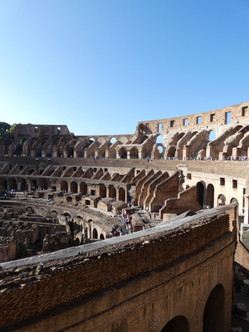



















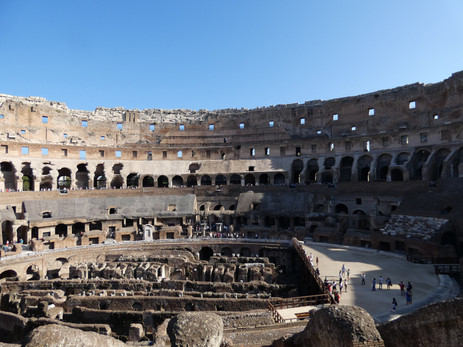















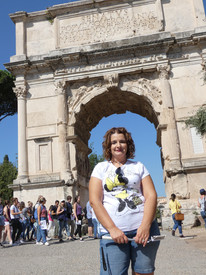









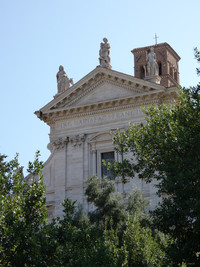



















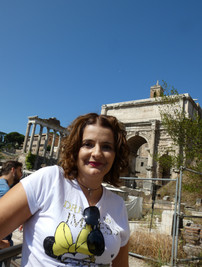









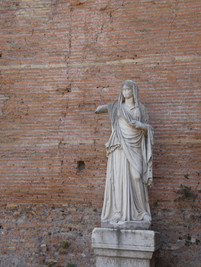

















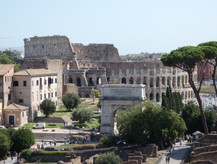























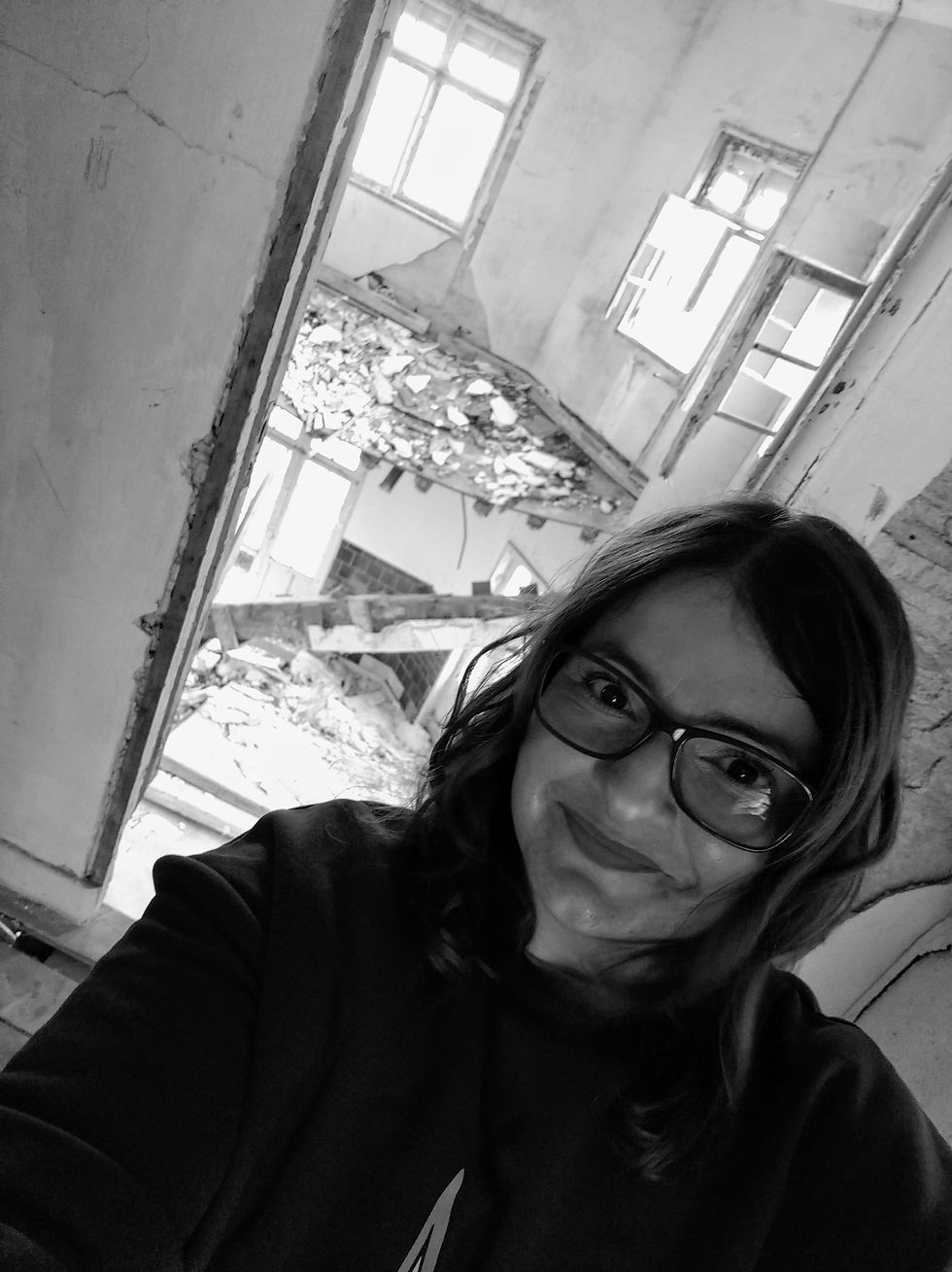

Comments